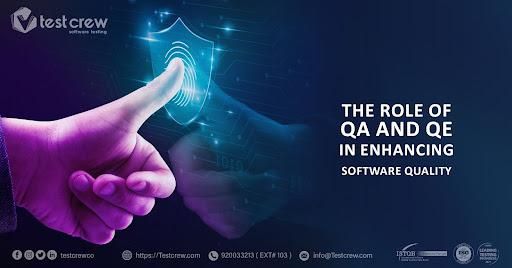There are various videos, blog posts, and articles available on the subject of quality assurance and quality engineering. Nevertheless, the majority of the prospects and customers pinpoint the differences and overlap between these roles as unclear or confusing. For this, we first need to figure out the difference between quality assurance and quality engineering.
Quality Assurance is a systematic procedure for determining if the service or product meets particular requirements. Quality assurance maintains and establishes set necessities for manufacturing or developing consistent products.
Quality engineering is concerned with practice and principles of service and product quality assurance and control. During software development, it is the organization, development, process, and maintenance of enterprise architectures and IT systems with top quality standards.
How Agile Has Changed The Role of a Quality Assurance Resource?
The old waterfall technique applied for the QA role is reactive. This included:
· Identifying bugs
· Evaluating
· Documenting
· Reporting the outcomes
· Showing the effect to the development team
The agile model has modified the focus of this role, in performance with recent quality engineering roles, into defect prevention. This makes the role extremely practical and embedding quality in the software development procedure from the beginning of the product development life cycle.
The function of quality engineering and quality assurance differs from customer to customer, between project and project stages.
How QA and QE Improve Software Quality?
During an agile development process, the role of the QA resource begins with the beginning of planning. The QA role is required in each stage of the software development lifecycle and is responsible for:
· Developing test plans, planning sprint, planning release, and contributing in ceremonies as the testing subject matter specialist.
· Backlog Management- developing and enhancing stories by recognizing missing edge cases and acceptance criteria.
· Connecting the testing status in routine stand-ups and implementing functional tests when a story is created.
· Assessing both behavior and functionality and keep documenting bugs and functioning closely with the developers in the retest and error detecting stages.
· Recognizing regression test cases for the browser and application-related security test cases, performance, UX, mobile test cases, and test cases.
· Functioning with the clients- offering test steps for classifying them like enhancements or bugs, coordinating problems detected via testing, analyzing, offering test steps for acceptance testing.
· Manual efforts are required to set up the environments.
On the contrary, the role of quality engineering is to work closely with quality assurance.
· Test case identification that is implemented frequently.
· Test identification that incorporates various versions of operating systems, devices, and numerous browsers.
· Identify complete test cases.
· Automate the recognized test cases with the assistance of automation testing tools and frameworks.
· Think about the majority of the difficulties of manual testing.
· Automate the tests to be implemented in the continuous integration (CI) procedure when software is positioned in many environments.
· Bugs recognition as an outcome of automation test fiascos and re-run tests after resolving failures.
Assimilating Both Techniques Generates Better Results
The traditional waterfall development incorporates the quality assurance role as an identification system for defects before deployment. The roles of quality assurance and quality engineering function hand in hand from the beginning of the development lifecycle to implant quality into the development procedure. This finally changes the ultimate product quality and decreases the user acceptance testing (UAT) cycle.
It is important to analyze the difference between quality engineering and quality assurance to efficiently apply them to projects. Every role must be compared with the objectives of a project for a perfect fit. The road to success when applying a QE and QA together is that they support each other. This is done by following the top quality standards along with the excellent quality product.
TestCrew follows the best quality engineering approach. It includes:
· Evaluation of present QE process
· Applying agile testing and test-driven development
· Process supervision and control
· Setting standards and benchmarks
· Creating reusable and suitable tests
· Constantly recognizing issues and taking helpful action
· Analyzing and recording testing data
· Thinking test solutions and environments
· Observing problems and their resolution
· Connecting to all stakeholders




















 sunrise
StableDiffusion
sunrise
StableDiffusion
 bonfire friends
StableDiffusion
bonfire friends
StableDiffusion
 sadness
StableDiffusion
sadness
StableDiffusion

 purple skies
StableDiffusion
purple skies
StableDiffusion

 true love
StableDiffusion
true love
StableDiffusion
 My Cheerleader
StableDiffusion
My Cheerleader
StableDiffusion
 womans transformation to happiness and love
StableDiffusion
womans transformation to happiness and love
StableDiffusion
 future life together of adventures
StableDiffusion
future life together of adventures
StableDiffusion
















